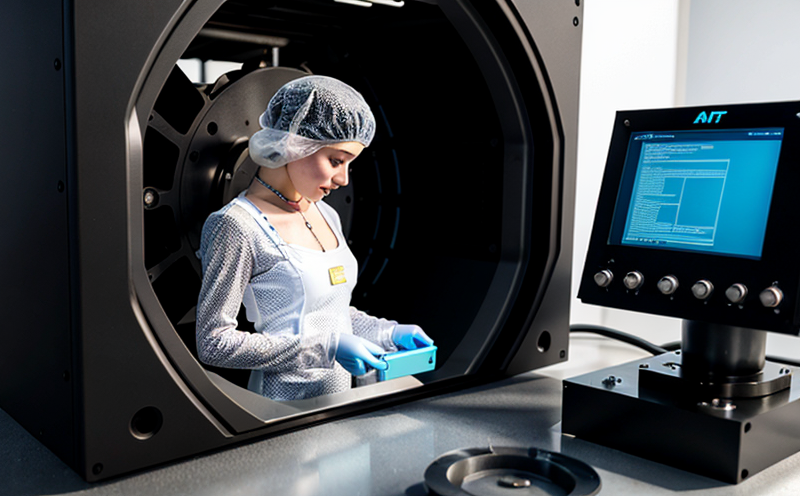ISO 52902 Test Artifacts for Additive Manufacturing Validation
The ISO 52902 standard is a cornerstone in the validation of additive manufacturing (AM) processes, providing a comprehensive framework to ensure that AM parts meet specific quality requirements. The standard focuses on the development and use of test artifacts, which are essential tools for validating the consistency and reliability of AM processes.
Test artifacts serve multiple critical roles: they help identify process parameters that affect part quality; validate the repeatability and reproducibility of AM processes; and assess the dimensional accuracy, mechanical properties, and surface finish of parts. By using ISO 52902-compliant test artifacts, manufacturers can ensure that their AM processes are robust and capable of producing parts with consistent performance.
The standard defines clear guidelines for designing, manufacturing, and maintaining these artifacts. It specifies the materials, geometries, and dimensions that should be used to create test artifacts. The choice of material is crucial; it must match the part being validated as closely as possible in terms of thermal conductivity, mechanical properties, and other relevant parameters.
The design of the artifact itself plays a significant role in its effectiveness. Commonly used geometries include simple shapes like cubes, cylinders, and spheres, which allow for straightforward measurement and analysis. More complex geometries may be employed to test specific aspects of part quality, such as layer-by-layer consistency or residual stress.
Once the artifact is designed, it must undergo rigorous manufacturing processes that mirror those used in production. This ensures that any discrepancies between the artifact and the final product are due to process variations rather than manufacturing differences. The use of advanced metrology techniques during the creation of these artifacts allows for precise measurement and validation.
The importance of ISO 52902 test artifacts extends beyond initial validation; they also play a vital role in ongoing quality control processes. By periodically testing artifacts, manufacturers can monitor changes in process parameters over time and adjust as necessary to maintain part quality.
Compliance with this standard is becoming increasingly important as the AM industry continues to grow. Regulatory bodies are placing greater emphasis on ensuring that AM parts meet the same stringent standards as conventionally manufactured components. This trend underscores the necessity of using ISO 52902-compliant test artifacts for validation.
In summary, ISO 52902 test artifacts are indispensable tools in the validation of additive manufacturing processes. They provide a structured approach to ensuring that AM parts meet quality requirements and can be relied upon consistently across multiple applications. By adhering to these standards, manufacturers can enhance their reputation and ensure compliance with international regulations.
Why It Matters
The development of ISO 52902-compliant test artifacts is critical for several reasons:
It ensures that additive manufacturing processes are validated consistently across different materials and geometries.
It provides a standardized approach to measuring the quality of AM parts, which is essential for regulatory compliance.
It allows for the early detection of process issues, thereby reducing the risk of producing non-compliant parts.
It supports continuous improvement by enabling regular validation and adjustment of processes.
The use of these artifacts also enhances customer confidence in AM products. By demonstrating adherence to international standards, manufacturers can build trust with their customers and stakeholders. This is particularly important as the demand for AM parts continues to grow across various industries.
In conclusion, ISO 52902 test artifacts are not just tools; they are essential components of a robust quality assurance program in additive manufacturing. Their importance cannot be overstated, especially as the industry evolves and regulatory expectations increase.
Industry Applications
The application of ISO 52902 test artifacts is widespread across various industries where precision and reliability are paramount:
Aerospace: Ensuring that parts meet stringent safety standards.
Medical devices: Verifying the accuracy and biocompatibility of implants.
Automotive: Guaranteeing part performance in high-stress environments.
Consumer electronics: Producing durable, high-performance components.
In each of these sectors, the use of ISO 52902 test artifacts helps to maintain a high standard of quality and consistency. This is crucial for industries where even minor deviations can have significant consequences.
The versatility of these artifacts allows them to be adapted to specific industry needs. For instance, in aerospace applications, the materials used may differ from those in medical devices due to different regulatory requirements. The ability to customize test artifacts ensures that they meet the unique demands of each sector.
Use Cases and Application Examples
The following table highlights some common use cases for ISO 52902 test artifacts:
| Use Case | Description |
|---|---|
Initial Process Validation |
Ensuring that the AM process is capable of producing parts within specified tolerances. |
Ongoing Quality Control |
Maintaining consistent part quality over time by regularly testing artifacts. |
Process Improvement |
Identifying and addressing process issues to improve overall quality. |
Part Certification |
Verifying that parts meet the required standards for certification. |
The table above illustrates how test artifacts are used in various stages of additive manufacturing. This ensures that every part produced is reliable and meets the necessary quality criteria.
In aerospace, test artifacts are often used to validate the mechanical properties of parts under extreme conditions.
In medical applications, they ensure biocompatibility and regulatory compliance.
These examples demonstrate the versatility and importance of ISO 52902 test artifacts in ensuring high-quality AM products across diverse industries.





